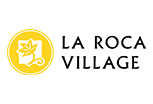The calçot is a variety of sweet, white spring onions traditionally grown in Catalonia. Although the season was originally confined to the winter months, the popularisation of this product has meant that it now can be eaten from November until the arrival of spring, and even well into April. The traditional way to cook calçots is by roasting them in an open fire, prepared with the shoots resulting from pruning the vines. When the outside is blackened, the calçots are wrapped in newspaper for a few minutes to finish cooking and keep them warm. A calçot is eaten with your hands, peeling the outer layer with your fingers and dipping them in romescu sauce. A hearty grilled meat is then usually served. The calçot of Valls is subject to a Protected Geographical Indication. On the last Sunday in January, the Festa de la Calçotada is held in the town. The events revolves around the calçots eating contest, where the current record holder ate more than three hundred units.
Valls is also one of the capitals of the castells, and there are plans to open a Castell Museum of Catalonia. It has been designed by the architect Dani Freixas, winner of the National Architecture Award, and within its nearly 3,000 square metres we will be able to learn, through the most advanced audiovisual technologies, about the complexity of the construction of these human towers that rise up to ten stories in height, and the profound joy the members of the groups experience during the festival days. If you have the opportunity to attend a day in one of the plazas castelleras, it will certainly be one of the most exciting experiences you can enjoy in Catalonia.

















